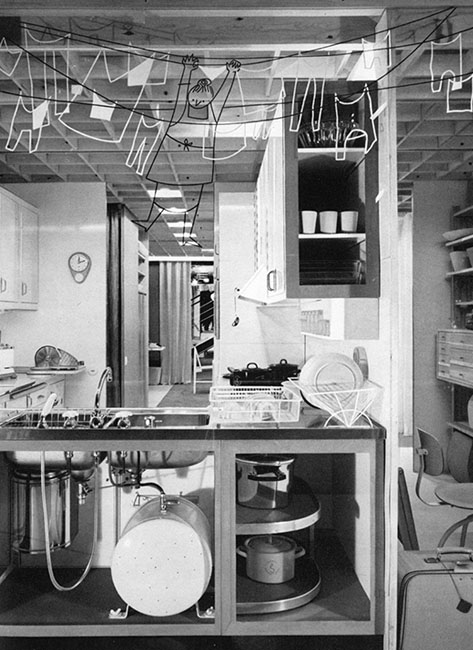Modelinterieurs en modelwoningen op Expo 58
Samenvatting
Modelinterieurs en modelwoningen waren een terugkerend onderdeel van de wereldtentoonstellingen uit de vorige eeuw. Ook op Expo 58, de wereldtentoonstelling in Brussel van 1958, kwamen deze presentatievormen veelvuldig voor. Verschillende deelnemende naties zagen in het modelinterieur of de modelwoning een krachtig didactisch instrument om het idee van een succesvolle wederopbouw, een nieuwe nationale identiteit of een beloftevolle toekomst onder de aandacht te brengen. Modelwoningen boden een vlot toegankelijke formule, herkenbaar over de nationale grenzen heen en uitermate geschikt voor de synthese van industrie en cultuur. Daarnaast was de modelwoning ook een dankbare formule voor deelnemers met een meer commerciële opzet. Vooral binnen de Belgische sectie geven bijdragen zoals het paviljoen van Gebouwen en Woningen of dat van meubelfirma Vanderborght een overzicht van wat de Belgische markt te bieden had of in de toekomst te bieden zou hebben. Behalve dat ze uitdrukking gaven aan de vooruitgang, leken deze modelwoningen en -interieurs vaak ook impliciet te verwijzen naar het algemene thema van de wereldtentoonstelling: ‘De balans der wereld voor een humanere wereld.’ Een goed of comfortabel ingericht huis was immers een basisbehoefte waarvan het maatschappelijk belang sinds de gruwel van de Tweede Wereldoorlog sterk was aangescherpt.
De modelinterieurs en -woningen op Expo 58 liepen sterk uiteen, mede als gevolg van de diversiteit aan deelnemende landen en bedrijven, en hun verschillende visies op ‘modern’ of ‘beter’ wonen. Bovendien was tegen het einde van de jaren 1950 het modelinterieur een vertrouwd medium geworden bij het grote publiek, dat inmiddels bekend was met de naoorlogse nationale promotie van het ‘nieuwe’ en ‘goede’ wonen. Op Expo 58 hadden ontwerpers dus de kans om deze beproefde tentoonstellingsformule op diverse, niet zelden subtiele en vernieuwende manieren in te zetten. Het assortiment varieerde van realistische woonmodellen op ware grootte tot fictieve of suggestieve ensceneringen waarbij meubelen en andere interieurobjecten een betekenisvolle rol speelden. Dit artikel belicht het rijke palet aan modelwoningen en -interieurs op Expo 58, en staat stil bij een aantal voorbeelden, dat de grenzen van het medium heeft verlegd.



